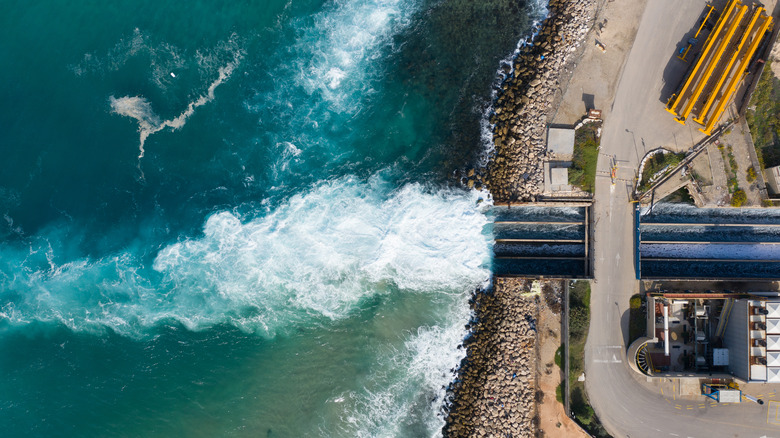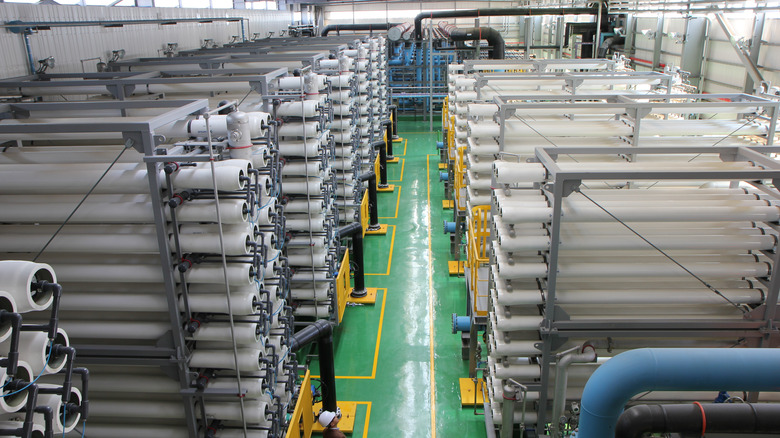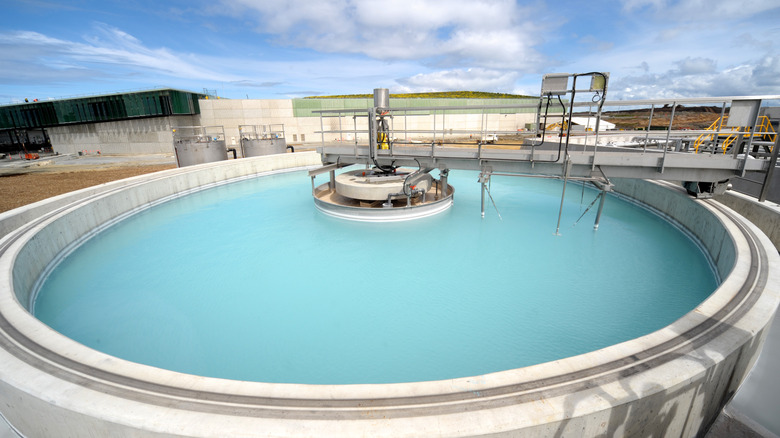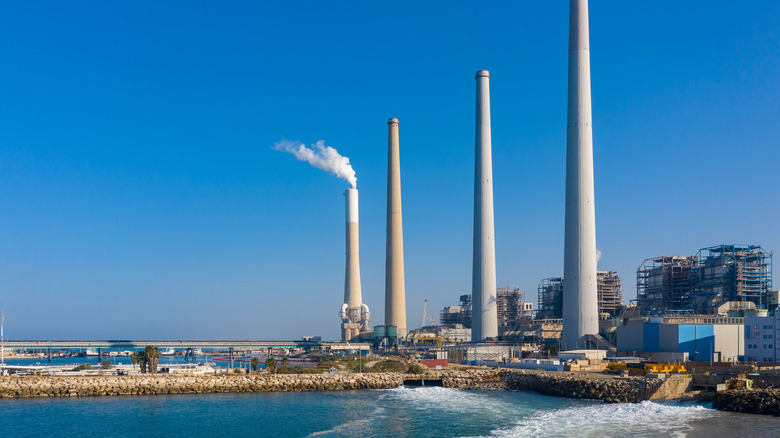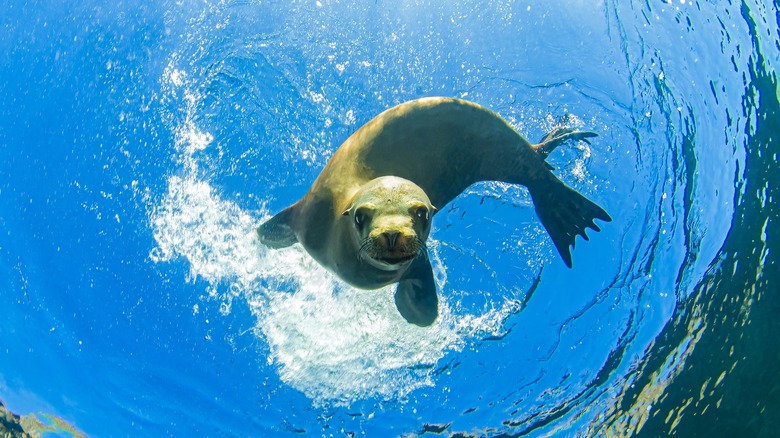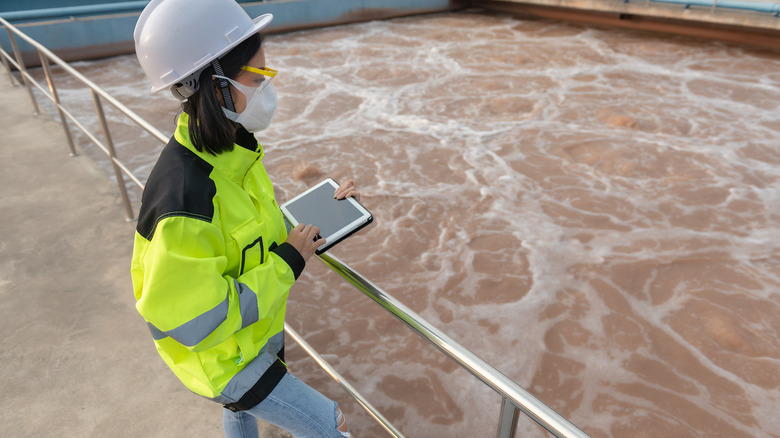Is Water Desalination Bad For The Environment?
On paper, desalination — that is, removing the salt from salt water to make it drinkable and suitable for agriculture — is a no-brainer for places, like the American West, that are prone to drought. The threat of long-term drought is currently increasing in these areas due to climate change, and right now, a megadrought that began in 2000 has entered its 23rd year for much of the southwest United States, according to The New York Times. It's the driest period of this length in at least 1,200 years, but the next 100 years is likely to bring even drier periods, even if fossil-fuel emissions are mitigated, per NASA.
Widespread desalination is a reality in places like the Persian Gulf, where countries like Qatar have invested in the costly technology to sustain a growing population (per The Washington Post). In Israel, more than half of all household water is supplied by desalination (via The New York Times). And in the United States, drought-touched states like California and Texas have increasingly invested in desalination plant development (per Yale Environment 360). But is it okay for the environment?
How does desalination work?
Desalination is something you could do in your kitchen: if you boil a pot of salted water with a device to catch the vapor, the salt gets left behind on the bottom of your pot. The Art of Manliness has a guide to desalinating seawater in a desert-island type of situation using a soda can and an empty plastic water bottle. When this type of desalination is done on a wide, industrial scale, it's known as thermal desalination, according to Yale Environment 360.
Another method for desalinating water is called reverse osmosis, which filters water through tiny porous membranes that the salt and minerals can't pass through. Though this method is the most common type of desalination used at water plants today because it's less energy-intensive than thermal desalination, it still uses a huge amount of energy to fuel the immense pressure required to push the water through those membranes, per Purdue.
Desalination uses a lot of energy
About a third of the lifetime cost of desalination plants is in the energy required to run them, according to Purdue. Much of the time, that energy is fossil fuels. Fossil fuels are the primary driver of manmade global warming. Many activists wonder if it makes sense to use fossil fuels to desalinate water when the water shortage may have been caused by fossil fuels to begin with. It is possible, of course, to use renewable energy to fuel desalination, but in many places, that's not happening.
Largely due to the energy required, the cost of desalinated water is 2 to 4 times that of other water sources, according to Heal the Bay, an environmental advocacy group based in Los Angeles. Desalination is becoming more efficient, however, though there is a limit to how efficient it can get (via Pacific Institute). "Even small improvements to the process — a few percentage points of difference — can save hundreds of millions of dollars and help to keep CO2 out of the atmosphere," said David Warsinger, a Purdue assistant professor.
How the brine is handled is important
When potable water is removed from salt water, what's left behind is a slurry of salt, minerals, and some remaining water, according to Heal the Bay. This mixture is known as brine, and it is one of the trickiest ecological problems that desalination creates. The brine is pumped back out into the ocean or marsh, where it sinks to the bottom, snuffs out oxygen, and makes it hard for life to thrive, according to Wired. Newer desalination technologies have produced less brine, but it remains a nasty side effect of the technology.
There are several techniques for making brine dumping less destructive. Plants can mix the brine with existing seawater before ejecting it, or let the remaining water in the brine evaporate in pools before disposing of the salt inland. The salt can be used to produce commercial road salt or even be foraged through for precious minerals like uranium.
The water-intake process might hurt wildlife
It's not just the brine ejection that harms local wildlife. A huge amount of water is taken in at a high-volume desalination plant, and grown fish, as well as larvae and other marine life, can be seriously hurt in this process; there are even instances of birds and large mammals being injured near the intake screen (via Pacific Institute). When the animals die from their injuries, they decompose nearby and reduce the oxygen levels of the surrounding water. In fact, though historically the ejection of brine was considered the largest environmental impact from desalination plants, the water-intake process might damage its ecosystem more directly.
Changes to the water-intake process theoretically can make it less destructive. An example of this is requiring subsurface intake of water, a process that incorporates ocean-floor sand as a natural filter. This method is not only less dangerous to wildlife, but it also increases the quality of the water and decreases the cost of production (per Filtration and Separation).
There are alternatives to desalination but none are a silver bullet
According to Heal the Bay, water conservation and efficiency, stormwater capture, and increased use of recycled water could help mitigate the need for desalination plants. Recycling water — in which used water from agricultural runoff, waste water, and/or industrial cooling water is purified for re-use — has been put to effective use in many water-scarce regions of the world, including in Israel, where recycled water is more than half of the total water used for agriculture, according to The New York Times. The United States, meanwhile, reuses just 1% of its water, so there's a lot of room for growth.
Even Heal the Bay, however, acknowledges that desalination may eventually be a necessity for the Southwest. In this case, they have called for using the best available technology to minimize the effect on local wildlife, such as requiring subsurface water intake.
